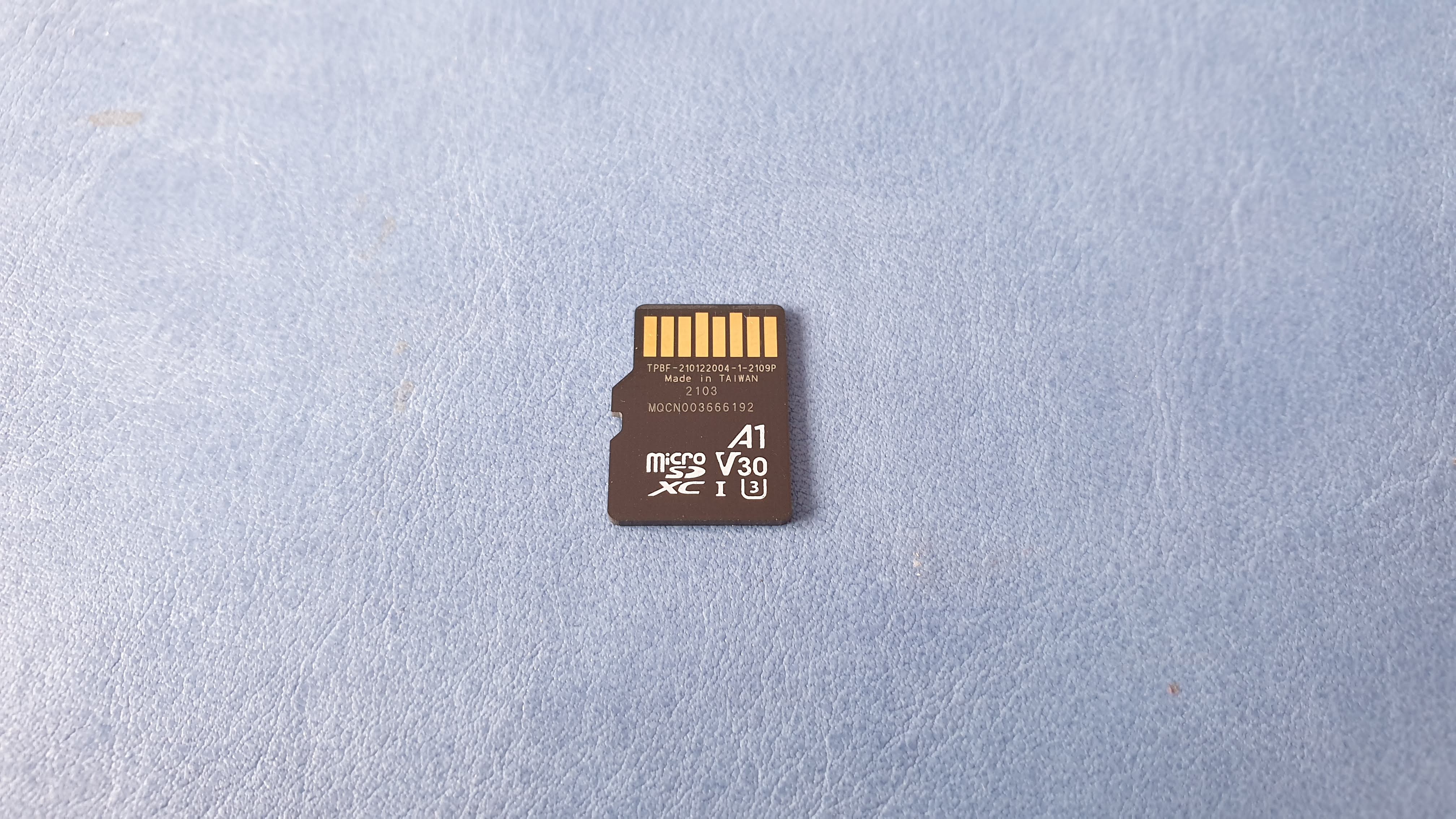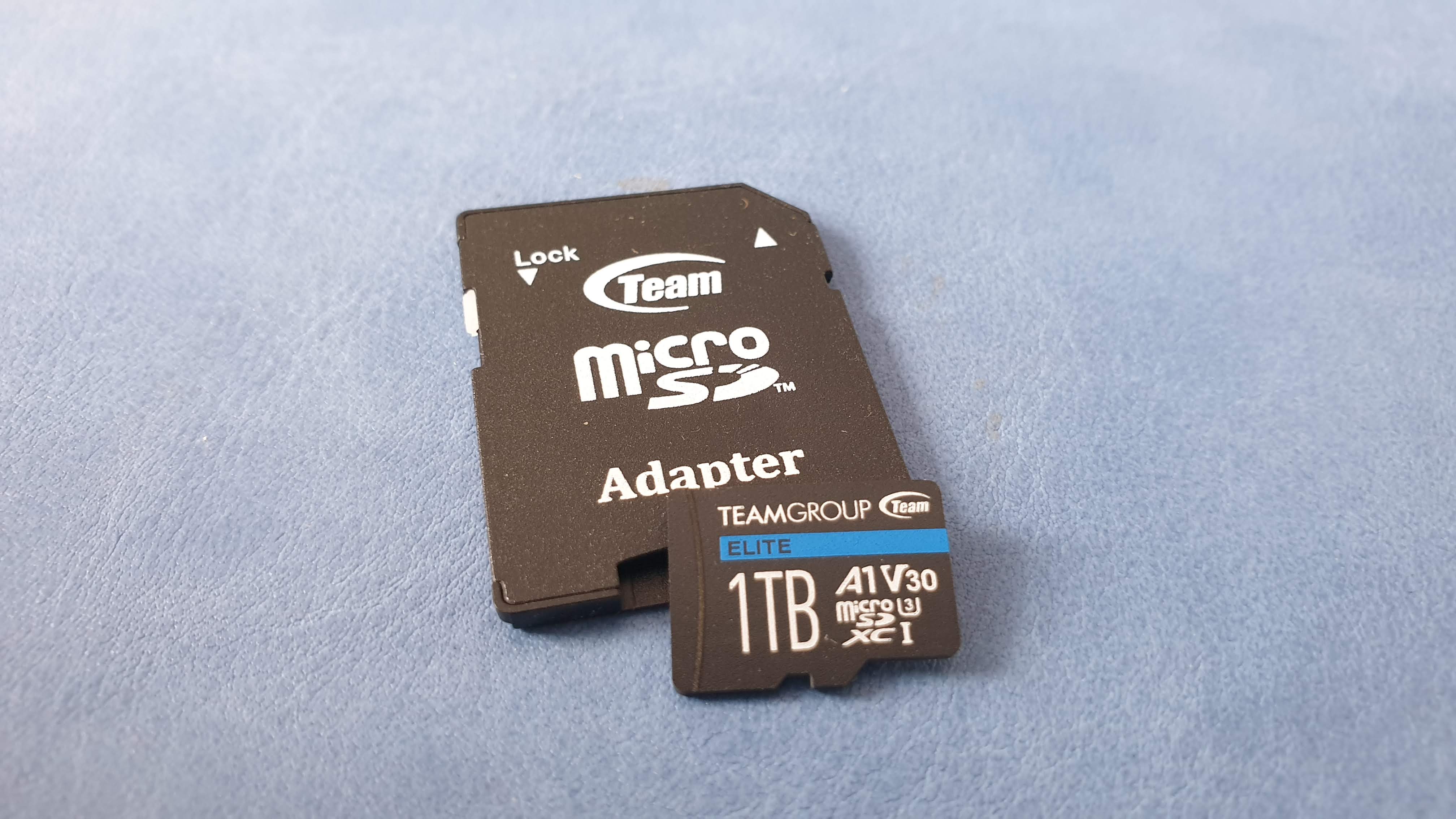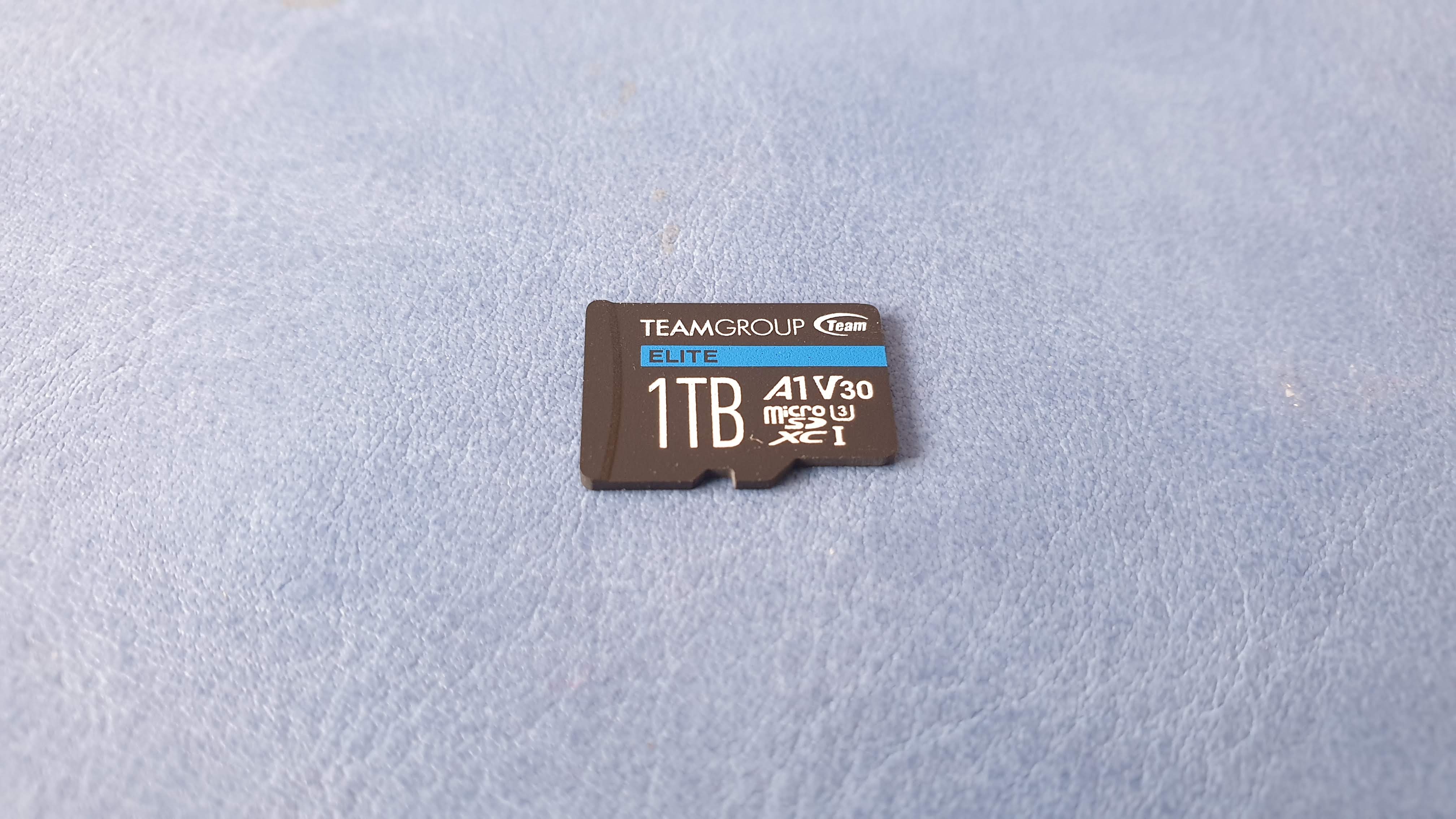Teamgroup 1TB Elite A1 microSD card
Two minute review
It’s been nearly three year since the first 1TB microSD card launched. Since then, large capacity MicroSD memory cards have come down in price in a spectacular fashion and Teamgroup has played a big role in making that happen. The challenger storage brand has been one of the most aggressive players in the market over the past few years, delivering some storage deals for price sensitive consumers.
Its flagship microSD card, the Elite A1, aims to extend this competitive trait to an audience that looks for performance as well. And this card delivers, in spades, with some of the best benchmark numbers we’ve seen on a 1TB microSD card to date. Add in lifetime warranty and you’ve got a pretty good deal; just bear in mind that there were slightly cheaper options available elsewhere at the time of writing which may sway those looking for the absolute cheapest offer.
Pricing and availability
This microSD card is on sale at Newegg for just under $155 (about AU$214, £114) with the 512GB version retailing for $57 (about AU$78, £42) while a 5-pack of 256GB cards will cost you $110 (about AU$151, £81). With Black Friday approaching, we’d expect prices to fall even further with a $130 target price being a very distinct possibility.
The Teamgroup 1TB Elite A1 microSD Card is also available from Amazon for just a few dollars more where that you can buy a 3-year data recovery plan for a mere $7.99, which is an absolute no-brainer if you care about your content. In a nutshell, if the microSD card stops working, the Rescue data recovery plan “will attempt to recover the data from the failed drive and recovered data will be returned on a media storage device or via secure cloud storage.”

Design
It’s a microSD card, the smallest widely-available storage format, barely bigger than a fingernail but with the highest storage density on the market. Not much to write about except that it says “elite”, 1TB,, A1, V30, U3 and MicroSDXC. Its rear, where eight connectors can be found, contain a few small prints, too small for the naked eye.

Note that the drive comes with a lifetime warranty, a MicroSD to SD card adaptor and can operate over a 110 degrees temperature range up to 85 degrees centigrade. It also comes with waterproof, dustproof and X-ray proof capabilities.
It’s incredible to think that these cards have a storage density of 6EB (Exabytes or billion Gigabytes) per cubic meter. In other words, just over six millions of these 1TB microSD cards can fit in a cube with 1m edges (and weighing a few tons). After all, they’re only 15 x 11 x 1mm.

Performance and in use
This microSD card sits in the UHS Speed Class 3 (U3) and UHS Video Speed Class 30 (V30) categories which means that it is fast enough for 4K/UHD video recording. We wouldn’t recommend it for anything that requires sustained write speeds like in a business security system. Faster and more specialist microSD cards exist for these use cases.
Likewise, we don’t know what underlying NAND technology it uses (TLC? QLC) but Teamgroup claims that its read/write speeds should hit 90MBps and 45MBps (sustained mode) respectively and random read/write speeds of 1500/500 IOPS.
Here’s how the Teamgroup 1TB Elite A1 microSD card performed in our suite of benchmark tests:
CrystalDiskMark: 92MBps (read); 87MBps (write)
Atto: 90MBps (read, 256mb); 85MBps (write, 256mb)
AS SSD: Did not run
AJA: 89MBps (read) ; 84MBps (write)
In our three benchmarks, the card performed admirably matching or surpassing the likes of Lexar Play 1TB, the Sandisk Extreme 1TB, the Micron C200 1TB and the Silicon Power 1TB. No surprise given that the underlying technology in each of them is very similar.
Its read speeds topped 92MBps (Crystaldiskmark - sustained) while its write speeds reached 87MBps with the same benchmark software. All tests were carried out on a Dell Latitude 7490 laptop with an integrated microSD card reader.
Note that the card did not come with any software applications: no backup software or security software. We wouldn’t mind some freebies like Seagate does with Adobe Creative Cloud and some of its portable SSD/external hard drives.
While there aren’t any plans for physically smaller cards or higher capacity cards, faster cards based on the SD Express technology are in the pipeline with promises to hit maximum read speeds of nearly 1GBps at launch. As expected, it will combine PCIe and NVMe interfaces to hit those speeds while maintaining backward compatibility with the legacy microSD interface.
In the future, Secure Digital Ultra Capacity (SDUC) format will offer cards of up to 128TB, although we’d be surprised to see 2TB microSD cards before the end of 2025.
Buy the Teamgroup 1TB Elite A1 if:
You want the best value for money large-capacity microSD card out there
While you will get better value for money from a smaller capacity memory card, this one won’t let you down if you’re looking for the biggest capacity available.
Performance is important
Teamgroup’s microSD card delivers some of the best read/write numbers we’ve seen to date and while we haven’t tested ALL 1TB cards on the market, it’s safe to say that it should be fast enough for most tasks out there.
Don’t buy the Teamgroup 1TB Elite A1 if:
You want the cheapest 1TB card
The most affordable 1TB microSD card right now is the Sandisk Ultra, a slower version of the Sandisk Extreme, which retails for about $136 (about AU$187, £100) and still carries a lifetime warranty.
Endurance is what you’re after
Teamgroup sells the Elite as a performance card, not one that can sustain 24/7 writes (like in a business security system) which could generate terabytes worth of content within a short period of time.
- We've also featured the best micro SD cards
0 comments:
Post a Comment